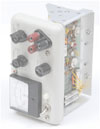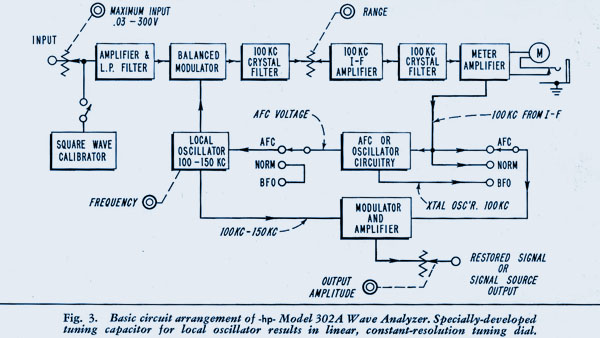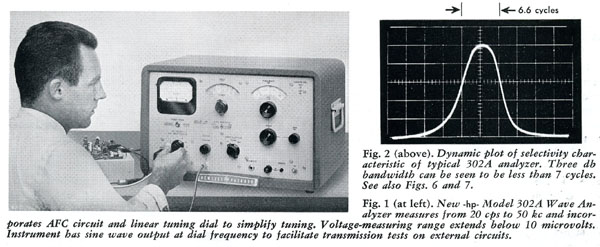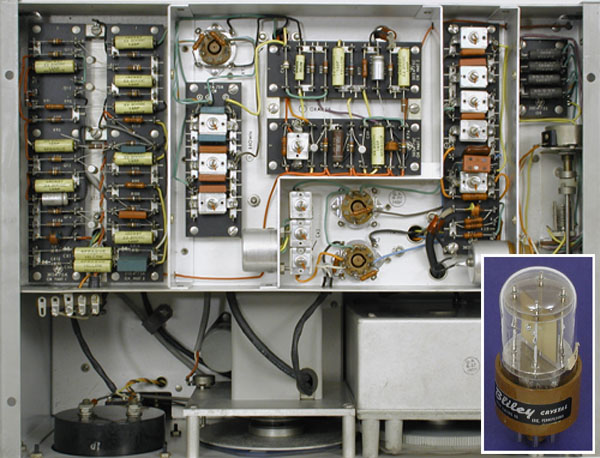Ten Years after the Transistor's Birth
Just ten years after the birth of the transistor a generation of engineers started to understand that safety features were very critical in this new component. The transistor was not as forgiving to electric shorts and other mistakes as tubes. Transistors from the first generation available on the market were very fragile and expensive, and development of devices using this very attractive and revolutionary component could become a ruinous experience.
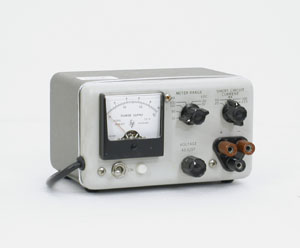 |
The HP 721A Transistorized Power Supply
|
HP 721A Transistorized Power Supply
The 721A power supply, itself fully transistorized, brought a solution to this costly problem.
A very simple concept, just a 30 Volts DC range and a 150 mA capacity, but a clever current-limit feature which protects the circuit under test and even the power supply itself against accidental overload.
John Minck in his "Inside HP narrative" remembers being surprised how many thousands of engineers would buy the product at an introduction price of $145. For only 150 milliamps. But such was the rush to semiconductors of the day.
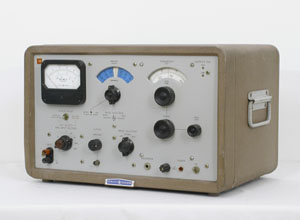 |
The HP 302A Wave Analyzer
|
The 302A Wave Analyzer
This was the second fully transistorized instrument made by HP. Introduced in the September, 1959 Hewlett-Packard Journal it was the replacement for its predecessor the HP 300A. The 300A was probably the second instrument designed by Bill Hewlett in 1941, yet It took almost two decades to replace the HP 300A but it is a spectacular example of the performance improvement brought by transistors.
The major improvement came from the low current drain of the transistors, the consequence of which was an absence of heat dissipation, thus eliminating the main source of instability for the oscillators and for most of the other circuitry found in electronic devices. These characteristics were mandatory requirements to achieve the performance of the 302A . The 302A can be seen as a very sharp, 3 Hertz bandwith, 100 kHz IF amplifier, tunable from 20 Hz to 50 kHz by mixing with an internal oscillator covering 100 to 150 kHz. Less than 3 Hertz drift at 150 kHz for a free running oscillator was an impossible challenge for vacuum tubes. But transistors associated with top quality mechanical design made the miracle a reality. Furthermore, an internal AFC circuitry could be activated to lock the wave analyzer on an incoming signal having some instability. The frequency hold-in range is +/- 100 Hertz minimum.
The HP 302A provided also a BFO signal source output. This was a constant-amplitude signal whose frequency was always the frequency to which the analyzer was tuned. This concept, later named tracking generator, would be reproduced on almost every succeeding Wave Analyzers and Spectrum Analyzers like, for example the 3581C Selective Level Voltmeter or the 3585A Spectrum Analyzer, both to be born in the 1970s.
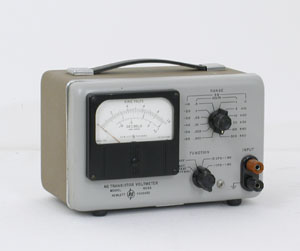 |
The HP 403A Transistorized AC Voltmeter
|
HP 403A Transistorized AC Voltmeter
The 403A AC voltmeter weighing less than 5 pounds and battery powered can be considered as the first HP handheld instrument, another benefit of transistor technology. Designed during the very last months of the 1950s it would be introduced in the 1960 catalog, page 59.
From 1 cps to 1 MC the measuring range goes from 1 millivolt to 300 volts full scale (12 ranges) in a 1, 3, 10 sequence.
Accuracy is within +/- 3 % of full scale from 5 cps to 500 kc
Nominal input impedance is 2 megohms.
Battery life is 400 hours. More than 6 months normal use.





